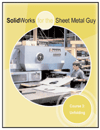Since the industrial revolution, there has been a collective Western consensus that technology would continue to propel our world forward, further strengthening our personal and professional lives. This idea, however, along with countless other previously unshakable beliefs was challenged and arguably disproven in 2020. At the start of the pandemic, many touted the beauty of virtual collaboration tools as a demonstration of our economy’s incredible ability to pivot to the remote-office model. Close to one year later, video chat and webinar fatigue are real. Furthermore, at a time when social, environmental, and economic concerns are at an all-time high, the antidote (or at the very least the catalyst for collective solutions) is human connection. Unfortunately, the current reality has most of us still squarely separated by screens with a prolonged and often unmet need for human connection.
In a recent Acuity Brands 2020 State of Energy Management Report, respondents projected that occupancy for the spaces they manage will see a 44-point decrease for January 2021 compared to January 2020, due to the impact of COVID-19 on facility use. In connection with this reduced occupancy, respondents anticipate an increased need for higher efficiency HVAC systems and the ability to remotely manage energy programs to address occupancy reductions and other challenges as they adapt system-wide performance. Thus, bringing the focus back to how the smart building community can help energy, facility, and sustainability leaders with their building efficiency and performance.
Historically, the smart building community has emphasized our ability to connect humans to the best technology for improving and enhancing productivity and occupant experience. What is becoming abundantly clear though is that we do more than that: as we connect humans to their environment and each other while in the building and beyond. In 2021 and beyond, we have the extraordinary opportunity to bring our communities back together via safer, smarter, and more sustainable connections.
Safer connections
From offices to schools and gyms to stadiums to places of worship, the desire to reconnect with others in the same physical space is profound. 2020 shed light on an area many people had previously taken for granted in the western world: The human health impact of indoor environments. Moving forward, the BMS industry is going to play a Herculean role in not only bringing spaces up to code but in finding ways to ensure individuals can better understand and feel the health and well-being benefits in the buildings they occupy. From IAQ monitoring and dashboards to indoor positioning apps guiding users to sanitation stations, we will be able to provide the products, services, and peace of mind to occupants of our commercial spaces. In doing so, teachers can focus on educating the next generation, colleagues can brainstorm on the next big idea to bring the economy forward, and people everywhere can be reconnected via incredible human creations, such as the arts and sports.
Smarter connections
This global pandemic has certainly made us rethink our connection to the built space. Smart building companies have long promoted the productivity benefits of unified systems for light, air quality, temperature, and humidity controls, and now we have an opportunity to showcase exactly how these systems work to unify not only systems but stakeholders. Our industry will be part of the solution that will allow individuals to connect in person once again for what can truly best be achieved face to face: collaboration, culture, and engagement. By offering modular, dynamic solutions, we can assist building owners and developers as they reimagine and evolve their spaces in the most impactful ways.
Sustainable connections
The post-pandemic world will require major adjustments, including important recovery programs. Leading the way amongst these initiatives are the green recovery proposals at all levels of government. The BMS sector has the incredible opportunity to play a hybrid role of both creating jobs as well as more energy-efficient infrastructure for a sustainable future. Also, as a growing number of occupants want to be part of solutions that are good not only for themselves but for their collective communities, our products and services help meet the environmental standards needed to attract and connect these like-minded individuals back into communal spaces.
Finding collective energy in the final chapters of confinement
Much of the media’s attention over the past year has, understandably, emphasized the role of the health sciences sector to “get us back to normal.” What we know now is that there will be a “new normal” as the expectations and needs of occupants and building stakeholders will change as a result of the lingering effects of the pandemic. However, it is a thrilling opportunity for the BMS industry to further our communities even beyond the previous status-quo to a safer, smarter, and more sustainable reality. With our recently widened leans that now reemphasizes human to human connection in addition to our previously limited perspective that human to technology connection was the future, to take up this charge of connecting buildings is even more inspiring. We, the smart building community, have such an exciting new chapter ahead. Over the coming months, as we continue to collaborate behind our screens with our sights set toward our “new normal,” may we be energized by the fact that we are proactively playing a role in helping us all around the world come together again.










